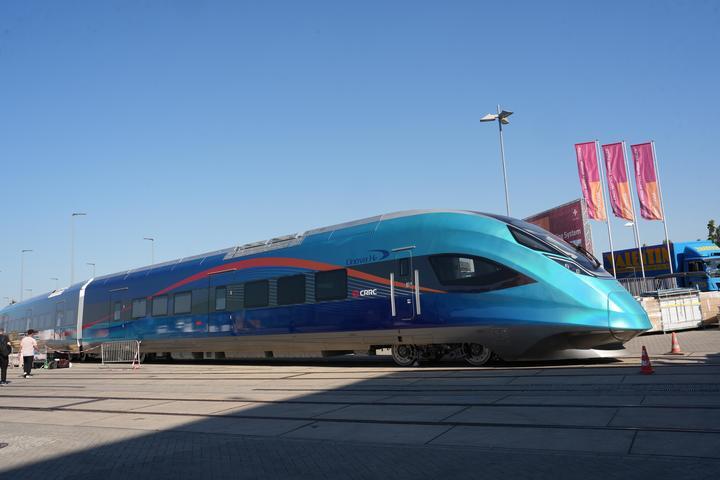China's first hydrogen powered intelligent intercity high-speed train, CINOVA H2, was officially launched at the Berlin International Rail Transit Technology Exhibition in Germany. The vehicle is powered by hydrogen and achieves "zero carbon" emissions throughout its journey. Its key performance such as operating speed, passenger capacity, and range are superior to similar international products, injecting new power into the green upgrade of non electrified railway passenger transport equipment.
The train is independently developed by CRRC Qingdao Sifang Locomotive and Rolling Stock Co., Ltd. (hereinafter referred to as CRRC Sifang Co., Ltd.). The car is equipped with a hydrogen fuel cell system independently developed by CRRC China, which has complete independent intellectual property rights. CRRC Sifang Co., Ltd. has overcome key technologies such as integrated train assembly design, full condition hydrogen electric hybrid power energy control, and full life cycle safety management, successfully realizing the engineering application of hydrogen energy in intercity high-speed trains.
Liang Caiguo, Chief Designer of CRRC Sifang Co., Ltd., introduced that the intelligent intercity high-speed train CINOVA H2 is equipped with hydrogen fuel cells, which use the electrochemical reaction between hydrogen and oxygen to generate electrical energy for driving. Compared to similar international products, this train has more equipment, runs faster, and goes further.
The car adopts a 4-car formation and is equipped with a high-power hydrogen fuel cell of up to 960kW. It has abundant power and can operate continuously at a speed of 160 kilometers per hour, with a maximum operating speed of up to 200 kilometers per hour. The train has the longest range in the world, with a range of 1200 kilometers at a speed of 160 kilometers per hour, 2000 kilometers at a speed of 120 kilometers per hour, and 3000 kilometers at a speed of 80 kilometers per hour. At the same time, the train has a fast hydrogen refueling speed, and it only takes 15 minutes to fill it with hydrogen gas once.
The entire reaction process of the hydrogen fuel cell in the car only generates water, and the vehicle has zero carbon emissions throughout the entire journey, without producing any air pollutants. According to an estimated annual operation of 300000 kilometers, each train of this vehicle can reduce carbon dioxide emissions by about 730 tons per year, equivalent to planting 567 acres of trees and forests. At the same time, the train innovatively utilizes recycling technology to turn wastewater and waste heat into treasure. The water discharged from the hydrogen fuel cell reaction is purified and treated for recycling, meeting the water demand of the entire vehicle. The cooling waste heat of hydrogen fuel cells can be recycled and used for winter air conditioning and heating.
CINOVA, also known as the "China Inter City Star," is the first intercity high-speed train technology platform in China. The hydrogen powered intelligent intercity high-speed train CINOVA H2 released this time is the first hydrogen powered train under this platform. This train has a wide range of application scenarios and can be used in non electrified railway areas both domestically and internationally, replacing traditional internal combustion powered vehicles.
